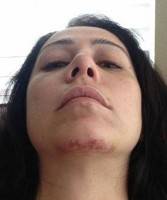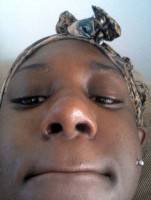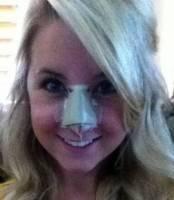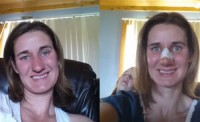Nose scab inside
Vaseline and other ointments after Rhinoplasty
I agree with what has already been said in terms of keeping the nasal lining moist with saline. Other options to keep things moist, especially at night, are applying vaseline to the area.
Your surgeon may have other options after he performs a physical examination of your nose and determines the issues. (Kevin Ende, MD, Manhattan Facial Plastic Surgeon)
Scabbing can happen
Anon, Scabbing or crusting can occur after rhinoplasty due to drying of the mucous membranes. I have my patients use saline nasal spray or drops three or four times daily for two weeks after nasal surgery.
This keeps the membranes moist and benefits the healing process.
Peroxide is a very harsh chemical to the healing process and I do not recommend it unless there is frank infection that needs to be treated. (Kenneth R. Francis, MD, FACS, Manhattan Plastic Surgeon)
Nasal vestibulitis causes painful nostril scabs.
Nasal vestibulitis is a condition where you can scabs in the nostrils that may cause pain, bleeding, and obstructed breathing.
This is common if you have a history of seasonal allergy. I’m not sure this is related to your surgery. You should see your doctor for an exam and diagnosis.
If you want to try over-the-counter hydrocortisone 1% cream, apply it with a Q-tip, and work it into the scabs liberally. If I’m right, you should get prompt resolution in 7 days or less. If there is no improvement after 2-3 days, then see your doctor. (Eric M. Joseph, MD, West Orange Facial Plastic Surgeon)
Humidity after rhinoplsty improves comfort
Besides contributing to good looks, the nose does have an important function. The nose and tissues within, the turbinates, control the flow of air and serve to add moisture (humidity) and warmth to the air we breathe. Swelling after nasal surgery alters the airflow and contributes to dryness within the nose. The dryness in turn can cause irritation of the lining with nosebleeds, crusting, or even scabbing. Starting during the first week after nasal shaping, we recommend to all a cold air or mist humidifier by the side of the bed at night to reduce dryness.
In addition we use Ayr nasal saline mist to be used several times each to keep the nose moist and comfortable. It also comes as a non drip gel which some patients prefer. The nose is generally “self cleaning” so avoid the temptation to blow too hard. If the crusting persists after these measures have your surgeon take a look. (Peter E. Johnson, MD, Chicago Plastic Surgeon)
Crust and rhinoplasty
One month out you should probably not have any further crusting. Keep the area moist and you should probably see your doctor to be evaluated. (Steven Wallach, MD, Manhattan Plastic Surgeon)
Rhinoplasty…Best Way to Clean Scabs From Nostrils
Do not pick at the scabs inside your nostrils after rhinoplasty. You can use a small piece of cotton ball saturated with hydrogen peroxide. Leave that in your nose for about ten minutes. Best to visit your surgeon who will be able to clean up the scabs once and for all. Be well and I hope that you enjoy your new nose. (Michael A. Persky, MD, Encino Facial Plastic Surgeon)
Scabs after rhinoplasty can be just scabs or sometimes more
Simple scabs can be gently washed off with Peroxide, using a soaked Q-tip to paint the Peroxide in the nose.
After each cleaning, Vaseline ointment can be applied if you are not allergic to it. This whole regimen can be repeated 4-6 times per day. Scabs further inside can be softened with use of nasal saline sprays or salt water irrigation.
If the scabs do not heal or resolve this way after a week or two then the concern is the possibility of a deeper ulcer or even perforation under the scabs. Let your doctor take a look and put your mind at ease. (Shervin Naderi, MD, FACS, Washington DC Facial Plastic Surgeon)
Wound care after Rhinoplasty
It’s fairly normal to have some mild scabbing inside the nose after rhinoplasty. When you irritate the lining of the nose it generates mucus and can crust if too dry.
Sometimes, if the scab is too large it needs to be debrided physicially. Once in a while, a stitch may still be present which can collect crusts as well. I would have your surgeon take a look at it. (Samson Lee, MD, Seattle Facial Plastic Surgeon)



